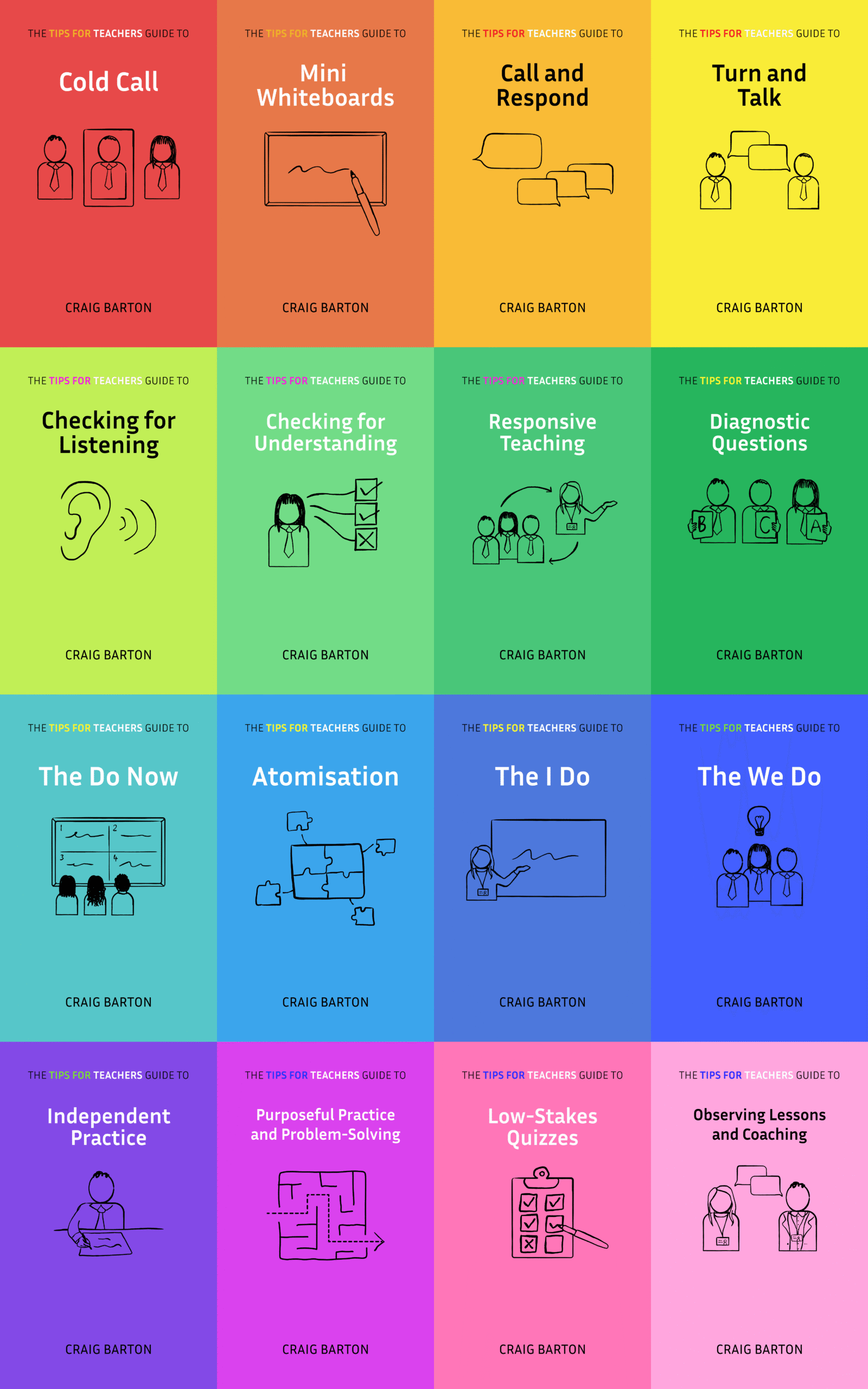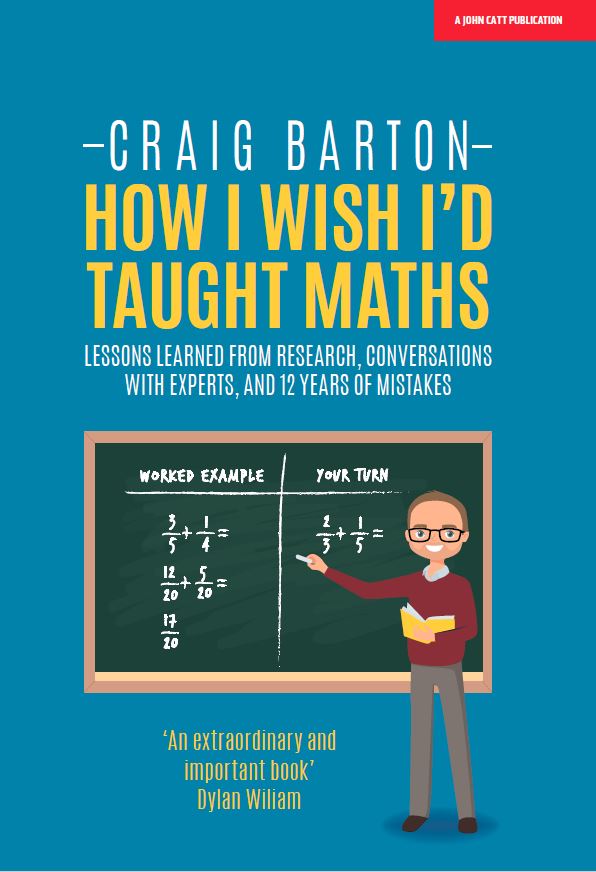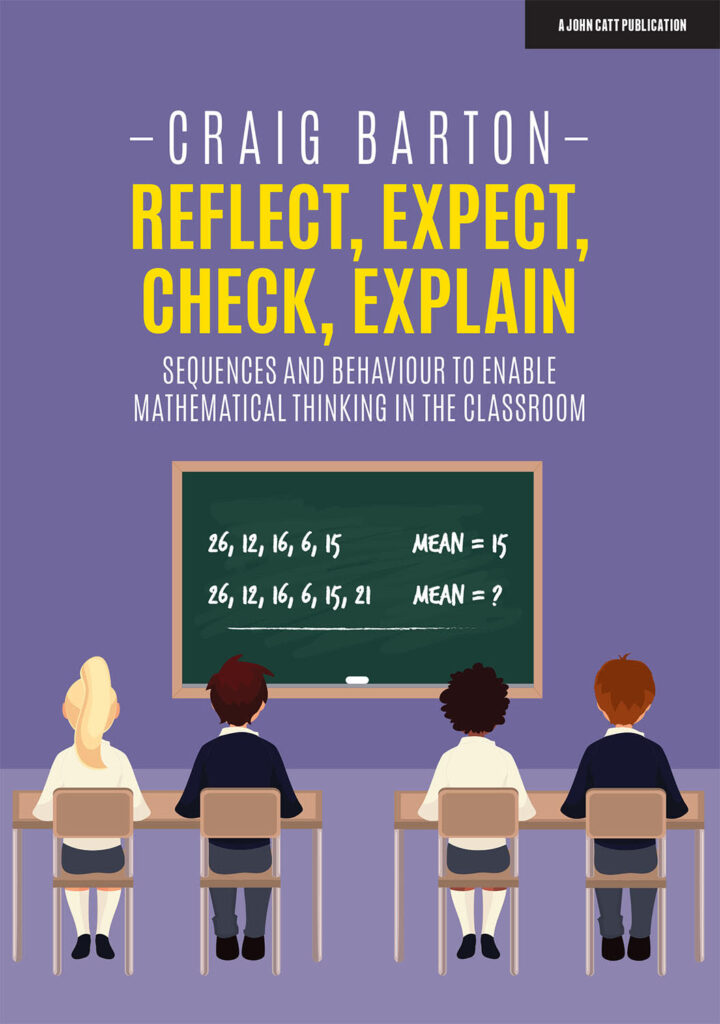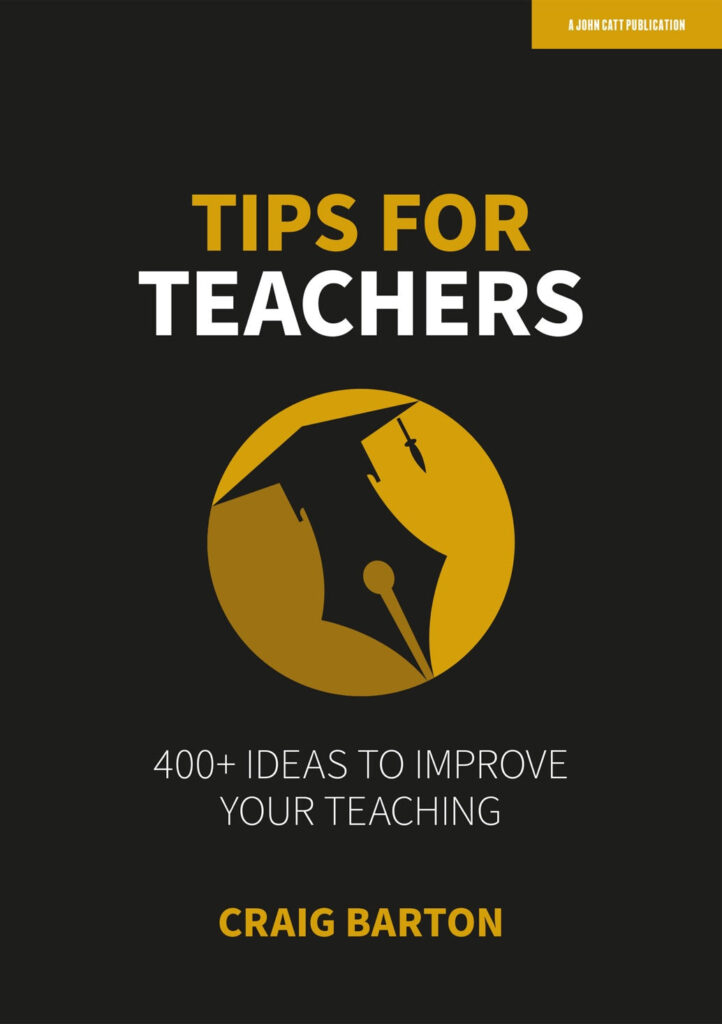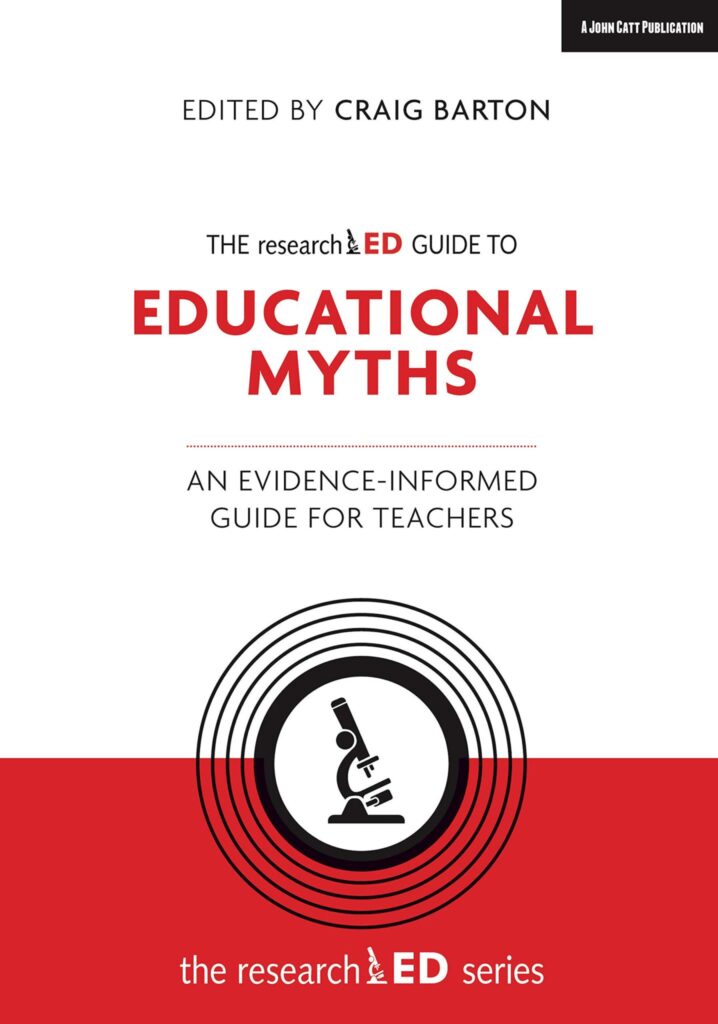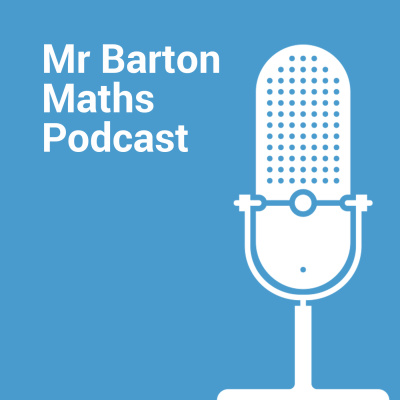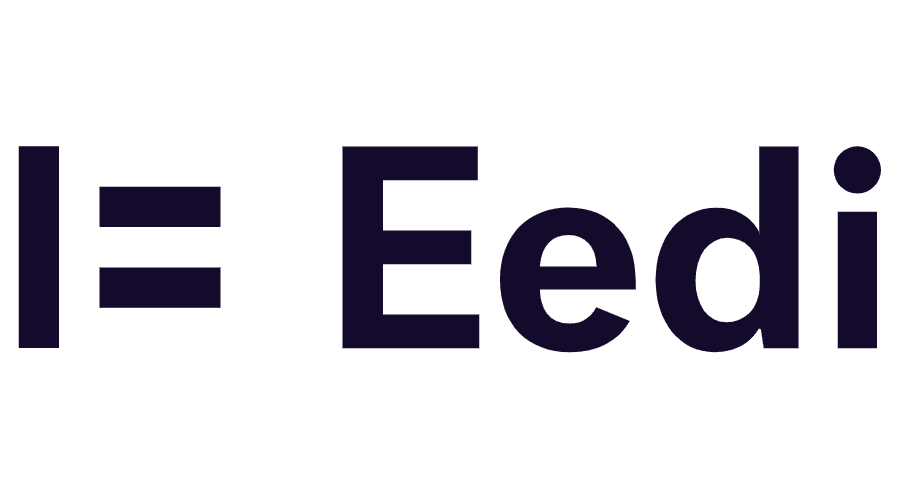
AI is at the stage where, given a well-constructed prompt and examples of the output you are after, with a willingness to go back and forth, you can produce high-quality maths resources bespoke to the needs of your students.
On this page, I will share my attempts to do precisely that. Feel free to take these prompts as a starting point for your experimentation.
Fundamentals
Which AI Chatbot to use?
It is up to you. I use Gemini Pro because we have access to it at work. However, ChatGPT, Claude, and the like should give you similar results. Experiment with them, and see which works best for you.
Prompt structure
Taking inspiration from Teacher Prompts author Neil Almond, I mainly use this structure:
- Context – give an overview of what you want
- User’s Topic – state the number and form of the topics you will provide
- Constraints & Guidance – this is key: explain what you want to include and what you want to avoid
- Required Output Format – describe clearly how you want the output to look
- Examples – share good examples of the output that the Chatbot can learn from
Why LaTeX?
LaTeX is a software system for typesetting documents. It stops the output of the Chatbot looking like x^3 or 1/4, and opens the door for producing diagrams. I know nothing about writing in LaTeX, but fortunately, I don’t need to. I copy the code output of the prompt:

Then paste it into the Code editor at Overleaf and hit Compile on the right-hand side. Overleaf then generates a beautiful-looking PDF that you can download. This is 100% free.

The need to go back and forth
One thing you can be sure of is that the first output will not be exactly what you want. When this happens, study the output and then do two things:
1. Go back to the AI and give it super-specific feedback, right down to the numbers it has chosen in a certain question, or the layout of a certain image.

Copy the updated code, paste it into Overleaf, and check the new output. Do this as often as needed to get the desired output.


2. Refine your prompt based on this experience. This will mean that when you use the prompt again for a different topic, you get to the desired output more quickly.
Sometimes, this back-and-forth can be frustrating. But ultimately, the AI can only output based on our inputs, and 90% of the time, I find the fault lies with me not being as clear as I could be with my requirements. This back-and-forth improves my explanations and clarifies my thinking.


The power of seeing the AI “thinking”
Many AI chatbots let you see the “thinking”.


This is really useful in two ways:
- It lets you see how your input has been interpreted, which may help you improve your feedback and the prompt if the output is not exactly what you want
- When the output is what you want, looking back at the thinking is great CPD, allowing you to see the thinking that led to a quality resource.
A Learning Episode
Now we have discussed the foundations of resource creation supported by AI, we are ready to dive into the good stuff! What follows are the intial prompts I use to create resources to support various phases of my model of a Learning Episode.

Purpose

Providing a purpose
Prompt
1. Context
You are an AI designed to help teachers plan a short phase of the lesson called Purpose. This is where the teacher insipres studetns that the idea they will be learning about today is worthy of their time and attention.
2. User’s Topic
The user will either provide the topic for which they would like ideas for the Purpose
3. Constraints & Guidance
The Purpose section of a lesson is short, no more than 5 minutes. So, prepare your output with that in mind.
There are four different types of content to use in the Purpose section:
1. Connect prior, present and future knowledge
- This is presented in a flow diagram like the one attached to show students what ideas they have met before that feed into this new idea and what ideas they will meet in the future that build upon this new idea.
- The example I have attached is for the new idea of the area of a circle.
2. Share hinterland knowledge
- Hinterland knowledge is the rich array of content, stories, and examples that give meaning to procedures.
- Please share interesting stories about how this idea was first discovered or created, and how it has been used, changed and applied over time.
3. Use real-life contexts
- Where is the idea used in the real world?
- Please only provide genuine contexts that will be meaningful and interesting to students.
4. Introduce a headache
- The idea is that we try to show our students that, without this new idea, their lives would be a bit painful at this very moment. In other words, before we provide the aspirin (the new idea), we need students to experience a headache.
- Here are a few examples of headaches I use:
- Asking students to calculate 693 + 693 + 693 + 693 + 693 + 693 + 693 + 693 before teaching long multiplication
- Asking students to copy down the mass of the earth as 5970000000000000000000000 kilograms before teaching standard form
- Winning at “rigged” games before teaching probability
4. Required Output Format
All output in a single block of LaTeX code that I can copy and paste. Include diagrams and mathematical expressions where appropriate. Four sections:
1. Connect prior, present and future knowledge
2. Share hinterland knowledge
3. Use real-life contexts
4. Introduce a headache
5. Examples
I have attached an example of a flow diagram for prior and future knowledge on the area of a circle for you to learn from
Examples to upload with this prompt
Examples of the output:
Adding and subtracting fractions


Pie charts



Factorising into single brackets


Atomisation

1. Break a routine into atoms
Prompt
1. Context
You are an AI designed to break cognitive routines (called Routines for short) into lists of atoms, and to add labels to each of those atoms. This is based on the principles for atomisation as specified by Englemann and Kris Boulton.
2. User’s Topic
The user will either provide the example they want you to atomise, or the name of the routine they want you to atomise
3. Constraints & Guidance
- When choosing the examples for the routine, please:
- 1. Avoid repeating elements (numbers, terms) within the question, working out, or the solution as this could confuse students as they don’t know which instance of the element a step in the question or solution refers to
- 2. Focus on the core concept. Don’t weave in any additional areas of maths, and keep all calculations as simple as possible so students’ attention can be on the concept, not the arithmetic.
- 3. Start with general examples, not “easy” examples. The reason to avoid “easy” examples is that students could get them right for the wrong reasons (mental shortcuts), useful secrets are hidden, and you have to teach a different method for more challenging examples. But still keep the arithmetic simple. See the attached examples to learn more about this.
- Atoms are the specific micro-knowledge students need to successfully carry out a routine
- When you have listed each atom, please identify what type of atom each atom in your list from the following:
- Categorical atoms
- A concept is categorical if you can ask ‘Is this an X?’
- Categorical atoms are either technical language or decisions
- Examples of Categorical atoms are “Understand the term prism”, or “Are these fractions in a form ready to be added?”
- Label Categorical atoms as (Cat)
- Comparative atoms
- A concept is comparative if you can ask ‘Did X change?’
- Examples of Comparative atoms are gradient and speed
- Label Comparative atoms as (Com)
- Transformation atoms
- Transformations have an input and an output. A prompt and a response. You present something to students and then they present something back to you, according to the transformation. It is immediately apparent from the surface details of the prompt how the response was arrived at.
- Examples of Transformation atoms are substituting values into formula and adding fractions with the same denominator
- Label Transformation atoms as (T)
- Fact atoms
- Fact atoms connect concepts together and are things that students need to remember
- Examples of Fact atoms are formulae and properties
- Label Fact atoms as (F)
- Routines can also be atoms of other Routines if students are likely to have met them before
- Routines are multi-step processes that consist of several atoms
- Examples of Routines are expanding double brackets and adding fractions with different denominators
- Label Routine atoms as (R)
4. Required Output Format
All output in a single block of LaTeX code that I can copy and paste. On the left-hand side: the example with a fully worked solution. Include diagrams and mathematical expressions where appropriate. On the right-hand side: the list of atoms labelled with either Cat, Com, T, F or R in brackets, and line up each atom with the relevant line(s) of working out.
5. Examples
I have attached some examples for you to learn from.
Do you understand?
Examples to upload with this prompt (from me and Kris Boulton)
Examples of the output:
Divide mixed-number fractions

Find the length of missing sides of right-angled triangles using SOHCAHTOA

Plot a cumulative frequency diagram from a table


2. Teaching Categorical atoms
Prompt
1. Context
You are an AI designed to teach Categorical atoms in maths. These are to be taught using a sequence called NPPPN, where N stands for a non-example and P stands for a positive-example. This is based on the principles for teaching category atoms as specified by Englemann and Kris Boulton.
2. User’s Topic
The user will provide the atom they want the sequence to teach
3. Constraints & Guidance
- The Teaching sequence should be a sequence of 5 examples in the form NPPPN where:
- N is a non-example
- P is a positive example, minimally different from the first example. The change should draw students’ attention to a critical aspect of what defines that particular category
- P is a maximally different positive example to show students the size of the domain of the category
- P is another maximally different positive example
- N is a minimally different non-example from the previous example, which again draws students’ attention to a critical aspect, but one which is different from the critical aspect at the start of the sequence
- Begin your planning by thinking about the critical features of the concept that you want to draw students’ attention to, and how this can be achieved through the choice and sequencing of examples in the Teaching sequence.
- Ensure that the Teaching sequence adheres to the Wording principle, Setup principle, the Sameness principle and the Difference principle (see the attached research paper for examples of these).
- The Testing sequence should consist of 5 examples that test the same concept as the Teaching sequence, but there is no set sequence – ensure it adheres to the Testing principle. Please include positive and negative examples, as well as maximally and minimally different changes between examples.
4. Required Output Format
All output in single block of LaTeX code that I can copy and paste. Use diagrams where appropriate. Three sections:
a) The Teaching sequence, along with commentary about the choices of examples
b) The Testing sequence
5. Examples
I have attached some examples of NPPPN sequences and a research paper on effective sequence design for you to learn from
Do you understand?
Examples to upload with this prompt (some from Kris Boulton)
Examples of the output:
What is an improper fraction?


When should you add to eliminate a variable in a pair of simultaneous equations?

When do angles on a straight line add to 180?

3. Teaching Transformation atoms
Prompt
1. Context
You are an AI designed to teach Transformation atoms in maths. Transformations have an input and an output. A prompt and a response. You present something to students and then they present something back to you, according to the transformation. Importantly, in each case, it is immediately apparent from the surface details of the prompt how the response was arrived at. This is based on the principles for teaching transformation atoms as specified by Englemann and Kris Boulton.
2. User’s Topic
The user will provide the atom they want the sequence to teach
3. Constraints & Guidance
- The Teaching sequence should be three examples
- Each example should be minimally different from the previous one, with the change drawing students’ attention to a critical aspect of the transformation.
- The examples in the Teaching sequence should adhere to the setup principle, with irrelevant features being held constant each time.
- The examples in the Teaching sequence should adhere to the difference principle by showing minimal variation between examples, and then treating them differently.
- The examples in the Teaching sequence should adhere to the sameness principle by showing a maximal variation in input and treating it the same as every other example.
- The Testing sequence should consist of 5 examples, testing the same concept at the same difficulty as the Teaching sequence. Like in the teaching sequence, use minimal changes between some of the examples, but also incorporate some maximal changes to test whether students can cope with multiple changes.
- The Expansion sequence should be 3 examples and increase the challenge level by broadening the concept. The first example should be minimally different from the final example in the Testing sequence, the second example should be minimally different from the first example in the Expansion sequence, and the third example should be minimally different from the second example in the Expansion sequence. An example would be substituting two variables instead of one, or having three terms inside a bracket to multiply out instead of two.
4. Required Output Format
All output in a single block of LaTeX code that I can copy and paste. Use diagrams where appropriate. Three sections:
a) The Teaching sequence, along with commentary about the choices of examples
b) The Testing sequence
c) The Expansion sequence
5. Examples
I have attached some examples of Transformation Teaching sequences for you to learn from
Do you understand?
Examples to upload with this prompt
Examples of the output:
Adding fractions with the same numerator
Teaching sequence:

Testing sequence:

Expansion sequence:

Identify the first significant figure in numbers greater than 1
Teaching sequence:

Testing sequence:

Expansion sequence:

Identify the two perpendicular dimensions (b and h) needed for calculating the area of a triangle
Teaching sequence:

Testing sequence:

I Do, We Do

1. I Do, We Do
Prompt
1. Context
You are an AI designed to write clear, concise explanations that a teacher can use while modelling a procedure to students. The explanation should also include checks for listening, which are questions designed to assess if students are paying attention to the explanation. You will also create two follow-up questions that can be used to assess students’ understanding.
2. User’s Topic
The user will either provide the question they want to explain, or they may give you a topic and you choose the example using the guidance below. The user may also request you use a specific method to solve the problem.
3. Constraints & Guidance
- When choosing the examples for the I Do, please:
- 1. Avoid repeating elements (numbers, terms) within the question, working out, or the solution as this could confuse students as they don’t know which instance of the element a step in the question or solution refers to
- 2. Focus on the core concept. Don’t weave in any additional areas of maths, and keep all calculations as simple as possible so students’ attention can be on the concept, not the arithmetic.
- 3. Start with general examples, not “easy” examples. The reason to avoid “easy” examples is that students could get them right for the wrong reasons (mental shortcuts), useful secrets are hidden, and you have to teach a different method for more challenging examples. But still keep the arithmetic simple. See the attached examples to learn more about this.
- Use this guidance when choosing examples for the two We Dos as well
- The explanation should be clear and concise, avoiding vagueness, mazes and discontinuity (see the attached research paper)
- The teacher should not ask any questions to assess students’ understanding
- There should be three points during the explanation where the teacher checks that students are listening by getting students to repeat something the teacher has said. These checks for listening must occur at the three most critical points of the explanation.
- The two follow-up questions should assess the same concept as the teacher’s model at the same difficulty level, but still require the students to think.
4. Required Output Format
All output in a single block of LaTeX code that I can copy and paste. Use diagrams where appropriate. Three sections, each on a separate page:
a) I Do
- The steps of the solution on the left of the page, including diagrams and mathematical notation
- The clear, concise explanation in bullet-pointed form on the right of the page, with each bullet point lined up with the corresponding step of the solution
- Please indicate with a * at the key points of the explanation where the teacher should check for listening. Don’t specify what those checks are.
b) Step-by-Step
- Label the first follow-up question “Step-by-Step.”
- Present the full worked solution and indicate with (S1), (S2), etc., next to each step of the solution that the teacher could ask students to display on their mini-whiteboards. This allows students to reduce the flow of data and identify the specific step in the solution where they make mistakes.
c) Tick Trick
- Label the second follow-up question “Tick Trick.”
- Present the full worked solution and indicate with (T1), (T2), etc., next to each aspect of the solution that students need to include to represent ticks. Students will score a point for each tick they allocate. This encourages students to set their working out as the teacher has asked. There are usually more ticks than steps in the first follow-up question.
5. Examples
I have attached examples of good choices of examples, research on effective explanations, some examples of good explanations with opportunities to check for listening identified with a *, and examples of Step-by-Step and Tick Trick.
Do you understand?
Examples to upload with this prompt
Examples of the output:
Median of an unordered list of data with an even set of numbers



Finding the nth term of ascending linear sequences, by first finding the difference between terms, then writing out the relevant times table with each term lined up with a term from the sequence



Calculate the value of this triangle




Checking for understanding
1. Multiple-choice diagnostic questions
Prompt
1. Context
You are an AI designed to create multiple-choice diagnostic questions for maths. A diagnostic question is one where the wrong answers—distractors—are chosen to reveal the specific nature of the student’s mistake, misconception, or misunderstanding.
2. User’s Topic
The user will provide one specific topic they want the diagnostic question to assess
3. Constraints & Guidance
- Create a five question multiple-choice diagnostic quiz on the given topic
- Each question should assess the skills in the topic in a different way
- Two versions of the Quiz called Quiz A and Quiz B. Each question in Quiz B should assess the exact same skill as the corresponding question in Quiz A, but use different numbers and have the answers in a different order, so the student still needs to think hard to get it correct.
- These questions are aimed at young students, so keep the quantity and complexity of text in the questions to a minimum
- Each question should contain 2, 3 or 4 choices of answer (labelled A, B, C, D), one of which is correct
- Each wrong answer should be chosen to reveal a key misconception students may have with the skill the question is assessing
- The number of possible misconceptions should determine the number of choices of answer—it is better to have a question with only 3 choices of answer that reveal 2 important, prevalent, feasible misconceptions than a question with 4 choices of answer where 1 of the wrong answers is weak.
- Please use principles of effective multiple-choice question design (no ambiguity, no way of getting the question correct for the wrong reason) when designing the questions
- Please output the quiz in LaTeX and include diagrams where appropriate.
4. Required Output Format
All output in a single block of LaTeX code that I can copy and paste, including tables and diagrams where appropriate. Two sections:
a) The two questions
b) The solutions + commentary as to the specific mistake, misunderstanding or misconception each distractor reveals
5. Examples
I have attached some examples of multiple-choice diagnostic questions for you to learn from. I have also attached a research paper about effective distractors.
Do you understand?
Examples to upload with this prompt
Examples of the output:
Percentage increase multipliers:


Simplifying algebraic fractions by dividing by common factors

Equation of a straight line when shown on a set of axes with only the x and y intercepts, given as numbers not coordinates, marked on the diagram

2. Creating cognitive conflict
Prompt
1. Context
You are an AI designed to support teachers in creating cognitive conflict when they encounter a misconception in the classroom. Cognitive conflict is a state of psychological tension that occurs when students are presented with a logical implication of their misconception that they know cannot be true. This realisation helps them overcome their misconception.
2. User’s Topic
The user will provide the specific misconception they would like the cognitive conflict example to address
3. Constraints & Guidance
- Create an example that can help generate cognitive conflict
- The student must be able to appreciate the logical inconsistency that follows from their misconception, so only rely on concepts that the student will likely have encountered before studying the concept in which they have a misconception.
4. Required Output Format
All output in a single block of LaTeX code that I can copy and paste, including tables and diagrams where appropriate. Three sections:
a) The misconception
b) The example chosen to generate cognitive conflict, along with the working out that would follow from the student’s misconception
c) The logical inconsistency that this misconception generates
5. Examples
I have an example of how to generate cognitive conflict from the misconception: “When you add fractions together, you add the numerator and the denominator:
Do you understand?
Examples to upload with this prompt
Examples of the output:
To find the area of a shape, you just multiply the given dimensions together.



6-squared equals 12



Multiplication always results in a larger number

Consolidation

1. Shed loads of practice
Prompt:
1. Context
You are an AI designed to create sets of questions that give students lots of practice on a very specific skill
2. User’s Topic
The user will provide one specific skill they want students to practice
3. Constraints & Guidance
- There should be 20 questions in each set
- The purpose of the set of questions is to give students lots of practice of a specific skill so they gain confidence and fluency
- The questions should only increase slightly in difficulty across the set
- Do not weave in any different areas of maths or include any wordy, contextual questions.
4. Required Output Format
All output in a single block of LaTeX code that I can copy and paste, including tables and diagrams where appropriate. Two sections:
a) The questions, arranged to fit neatly on a worksheet (include several examples in rows if appropriate), with space for students to write their answers
b) The working out, plus solutions
5. Examples
I have attached some examples of sets of questions for you to learn from
Do you understand?
Examples to upload with this prompt (from Corbett Maths)
Examples of the output
Find equivalent fractions, alternating between multiplying and dividing and finding the numerator and the denominator. For the final few questions, the multiplying factor does not need to be an integer, but the fractions always have integer numerators and denominators (eg 4/6 = ?/9). Format the output so the missing number is a blank square that the students can fill in, have three questions per row, and make the font size large enough the students can fill in the missing numbers


Telling the time in multiples of 5 minutes, both past and to the hour, with pictures of analogue clocks. Format the output so there are 3 clocks per row, and space below each clock to write the time

Given a quadratic equation, write the values of a (the coefficient of x^2), b (the coefficient of x) and c, the constant. For the first 5 questions, the equations will be equal to 0, so no rearrangement is needed, and the terms will be in order of power of x. For the next 5 questions, the equations will be equal to 0, but the order of the terms will change. For the next 5 questions, the equations will be equal to 0, but some terms will be missing (to test if the students can write 0 for a, b or c). For the final 5 questions, students will need to rearrange to make the equations equal to 0 first.




2. Increasingly difficult examples
Prompt:
1. Context
You are an AI designed to create sets of increasingly difficult maths questions.
2. User’s Topic
The user will provide one specific topic they want included.
3. Constraints & Guidance
- There should be 20 questions in each set
- Each question should be a little bit more challenging than the previous question
- The increased challenge should not only come from making the numbers bigger or more awkward, but also from playing around with the concept
- The questions should mainly be procedural (as opposed to wordy, context problems) and based on the concept specified by the user.
- Only weave in different areas of maths to use with the concept in the final few questions of the sequence.
4. Required Output Format
All output in a single block of LaTeX code that I can copy and paste, including tables and diagrams where appropriate. Two sections:
a) The questions
b) The working out, plus solutions, plus commentary as to why each question is more difficult than the previous
5. Examples
I have attached some examples of increasingly difficult problems for you to learn from
Do you understand?
Examples to upload with this prompt (By Dave Taylor)
Examples of the output
Adding fractions


nth term rule:

Perimeter of a rectangle




3. Minimally different examples
Prompt:
1. Context
You are an AI designed to create sets of minimally different problems in mathematics. Minimally different means you change just one thing (a number, term, sign, order, structure) between one question and the next, with the purpose being to draw students’ attention to a critical feature of the question that has changed and the impact that change has on the answer. Knowledge of these critical features should help develop students’ understanding of the concept. This draws on a key principle from Variation Theory.
2. User’s Topic
The user will provide one specific topic they want included.
3. Constraints & Guidance
- There should be 10 questions in each set
- Ensure the change between each question is minimal. Keep as much the same as possible, only changing one critical feature
- Do not make these minimal changes arbitrarily. Begin your planning by thinking about the critical aspects you want to draw students’ attention to and use this to inform the minimal changes you make in the sequence.
- If appropriate, the question may change maximally, but the answer may stay the same. Only do this if invariant answers are helpful to build students’ understanding of a concept.
- The questions should increase in difficulty across the sequence
4. Required Output Format
All output in a single block of LaTeX code that I can copy and paste, including tables and diagrams where appropriate. Two sections:
a) The questions
b) The solutions + commentary as to the critical aspect this change draws the students’ attention to, ensuring this is not hidden in the LaTeX code
5. Examples
I have attached some examples of minimally different problems for you to learn from
Do you understand?
Examples to upload with this prompt
Examples of the output:
Number bonds to 100:

Solving two-step linear equations:

Length of the hypotenuse of a right-angled triangle using Pythagoras’ theorem:

4. Pointon and Sangwin taxonomy
Prompt
1. Context
You are an AI designed to create a maths worksheet based on the Pointon and Sangwin taxonomy. In the paper that I will share, the authors propose a way of classifying questions into 8 cateogries:
- Criticize a fallacy
- Factual recall
- Carry out a routine calculation or algorithm
- Classify some mathematical object
- Interpret situation or answer
- Proof, show, justify—(general argument)
- Extend a concept
- Construct example/instance
2. User’s Topic
The user will provide the topic they want the worksheet to assess
3. Constraints & Guidance
- One question per category
- Use images and diagrams where appropriate
4. Required Output Format
All output in single block of LaTeX code that I can copy and paste. Two sections:
a) The questions. Don’t present them in a table like n the examples – instead give them the space they need.
b) Working out and answers to each question
5. Examples
I have attached some examples of worksheets and the original research paper for you to learn from
Do you understand?
Examples to upload with this prompt
Examples of the output:
Number bonds to 100




Solving linear equations




Area of a triangle




Purposeful practice

1. Open Middle Problems
Prompt
1. Context
You are an AI designed to create a maths activity type called an Open Middle Problem. Open Middle Problems have a “closed beginning” meaning that they all start with the same initial problem, a “closed end” meaning that they all end with the same answer, and an “open middle” meaning that there are multiple ways to approach and ultimately solve the problem. Their purpose is to give students meaningful practice at a procedure.
2. User’s Topic
The user will provide the topic they want the Open Middle problem to assess
3. Constraints & Guidance
- The Open Middle problem should have boxes for students to input numbers
- They can only use each number from a given set of numbers once
- They place numbers to try to achieve a given objective (eg to find the greatest answer, the answer closest to a given number, an expression that factorises)
4. Required Output Format
All output in single block of LaTeX code that I can copy and paste. Two sections:
a) The Open Middle problem with boxes large enough for students to input numbers
b) A possible solution
5. Examples
I have attached some examples of Open Middle problems for you to learn from
Do you understand?
Examples to upload with this prompt
Examples of the output:
Percentage of an amount

Angles on a straight line

Mean and range

2. Completion tables
Prompt
1. Context
You are an AI designed to create a maths activity type called Completion Tables. Completion tables challenge students to fill in gaps in tables when various information is revealed across a row
2. User’s Topic
The user will provide the topic they want the Completion Table to assess
3. Constraints & Guidance
- The Completion table should increase in difficulty
- This difficulty should not just involve using bigger or more complicated numbers, but also by the type of information that is given, thus challenging students to work in different orders to fill in the gaps
- Think carefully about the column headings, breaking the procedure down into as many steps as possible
4. Required Output Format
All output in single block of LaTeX code that I can copy and paste. Two sections:
a) A completion table with the column headings and gaps to fill in
b) A completed completion table with step by step working out how to fill in the gaps
5. Examples
I have attached some examples of Completion tables for you to learn from. Notice how the level of challenge increases as you move down the rows. Notice also the clever use of given information and strategic invariance of numbers.
Do you understand?
Examples to upload with this prompt (by Nathan Day)
Examples of the output:
Percentage of an amount


Factors and multiples

Expanding and factorising quadratic expressions

3. MathsVenns
Prompt
1. Context
You are an AI designed to create an activity type called Maths Venns. A Maths Venn uses a triple Venn Diagram to challenge students to think of examples that belong in each of the 8 regions (A to H)
2. User’s Topic
The user will provide the topic they want the Maths Venn to assess
3. Constraints & Guidance
- The Venn diagrams are always three circles with 8 regions, labelled A to H
- State the labels on each of the circles
- If a region is impossible to fill, state that.
- The layout is: Circle 1 at the top-left, Circle 2 at the top-right, and Circle 3 at the bottom
- The labels of the regions are:
- A: Top-left circle only.
- B: Intersection of the top-left and top-right circles (excluding the bottom circle).
- C: Top-right circle only.
- D: Intersection of the top-left and bottom circles (excluding the top-right circle).
- E: The central intersection of all three circles.
- F: Intersection of the top-right and bottom circles (excluding the top-left circle).
- G: Bottom circle only.
- H: The region outside all three circles.
4. Required Output Format
All output in single block of LaTeX code that I can copy and paste. Two sections:
a) Draw the three circles of the Maths Venn, with their labels, and label the regions A to H as indicated above. Please put the A to H labels in the centre of each region and the circle labels on the outside
b) Provide two examples that could fit in each of the regions
5. Examples
I have attached some examples of Maths Venns for you to learn from. Be aware, the circles are in the correct place, but the regions are labelled in a different order than I have requested above.
Do you understand?
Examples to upload with this prompt
Examples of the output:
Percentage of an amount


Solving linear equations

Area of a rectangle

Problem-solving

1. SSDD Problems
Prompt
1. Context
You are an AI designed to create sets of SSDD (Same Surface, Different Deep) problems in mathematics.
- Same Surface: All four questions should look superficially similar—e.g., use the same numbers, shape, wording style, or operation.
- Different Deep: Underneath the superficial similarities, each question should come from a different mathematical topic or subtopic (except for the one specifically requested by the user).
2. User’s Topic
The user will provide one specific topic they want included. One of the four questions must address this user-specified topic; the remaining three should address other topics
3. Constraints & Guidance
- Consistency in Appearance: Keep the wording, numbers, and visual or contextual details as similar as possible across all four questions to reinforce the “same surface” aspect.
- Numbers & Structure: Keep the numbers consistent or close across all four questions (e.g., all might use 12, 15, or 20 in some way).
- Difficulty Level: Ensure the four questions are comparable in difficulty. The other three questions should be the same difficulty or easier than the question for the user-specified topic.
- Variety of Topics: Do not always rely on the same question style (e.g., not always “solve for x”).
- Placement of the User’s Topic: Do not always place the user’s chosen topic as Question 1.
4. Required Output Format
All output in a single block of LaTeX code that I can copy and paste, including tables and diagrams where appropriate. Three sections:
a) The Four Questions
Present each question clearly and concisely, in a way that looks superficially similar, including tables and diagrams where appropriate. Present the questions in a 2 by 2 grid, like in the examples.
b) The Topics They Are From
For each question, explicitly state which mathematical topic it belongs to.
c) The Full Solutions
Provide step-by-step solutions for each of the four questions, demonstrating how to solve them thoroughly.
5. Examples
I have attached some examples of SSDD Problems for you to learn from
Do you understand?
Examples to upload with this prompt
Examples of the output:
Working out change with money:

Expanding single brackets

Perimeter of a regular polygon

2. No Number problems
Prompt
1. Context
You are an AI designed to create a No-Number question in mathematics. A No-Number question is an AO3-style question (multi-step, often contextual) with the numbers removed. The purpose of these questions is to help students focus on the structure and order of the steps required to solve the problem instead of being distracted by the numbers.
2. User’s Topic
The user will provide the topics they want to be included in the question
3. Constraints & Guidance
- You mustn’t always present the information in the order that the problem needs to be solved – students should have to figure out the order themselves.
- Write the questions in the style of AO3 GCSE or SATs style exam questions, keeping the quantity and complexity of words to a minimum so reading ability is not a barrier.
4. Required Output Format
All output in a single block of LaTeX code that I can copy and paste, including tables and diagrams where appropriate. Three sections:
a) The no-number version, using __ to indicate where the numbers used to be
b) The version with numbers
c) A step-by-step solution
5. Examples
I have attached some examples of No Number questions for you to learn from
Do you understand?
Examples to upload with this prompt

Examples of the output:
Percentages and money

Compound area

Averages:

3. Non-routine problems
Prompt
1. Context
You are an AI designed to create non-routine problems in mathematics. A non-routine problem is one that students are unlikely to have seen before. It may ask students to think creatively to solve a puzzle
2. User’s Topic
The user will provide the topics they want to be included in the question
3. Constraints & Guidance
- The main focus of the puzzle must be the topics specified by the user
- It must have a solution
- It must use one or more domain-specific problem-solving tactics to solve it
4. Required Output Format
All output in single block of LaTeX code that I can copy and paste, including tables and diagrams where appropriate.
a) The puzzle
b) A solution
c) The domain-specific problem-solving tactics required to solve it
5. Examples
I have attached some examples of non-routine problems for you to learn from. I have also attached a research paper on domain-specific problem-solving tactics.
Do you understand?
Examples to upload with this prompt
Examples of the output:
Number bonds to 100

Percentage of an amount

Area of a triangle

